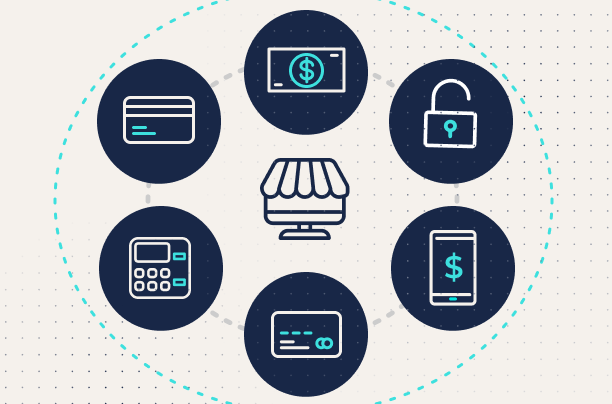In the early 2000s, people hotly debated whether e-commerce would be a viable business model. Over the last twenty years, the debate has become non-debatable, and the COVID pandemic increased the popularity of online shopping. According to analyst McKinsey, the online retail industry experienced two to five times faster growth in 2020 than before the pandemic. In 2021, that growth continued as evidenced by 14.2% growth of the US commercial market.
Knowing this, cybecriminals targeted online shopping platforms as a way to steal sensitive payment card data and personal information. For example, during the 2021 holiday season, monthly bot attacks on retail websites rose by 13% with one-third of all login attempts turning into account takeover.
Customer identity verification and user authentication in e-commerce offer a way to mitigate cyber risks for online retail platforms.
The Economic Impact of Data Security Breaches in E-Commerce
Online retailers need to protect themselves from data breaches. Otherwise, they face multiple, significant economic costs.

Data Breach Costs
The data breach itself comes with incident response costs that can be overwhelming. According to the Cost of a Data Breach Report 2021, the average cost of a data breach in the retail industry was $3.27 million, compared to $2.01 million in 2020.
Compliance
E-commerce companies need to comply with the Payment Card Industry Data Security Standard (PCI DSS) or else they face fines and penalties. If a data breach arises from non-compliance, the organization may face fines anywhere between $5,000 to $100,000 per month.
Fraud
Account takeovers occur when cybercriminals steal user credentials then make online purchases. According to research, for every $1 that ecommerce retailers lose directly to fraud, it really costs them $3.60. Combining this information with the rise in account takeovers during 2021, online retailers face significant financial impacts.
Common Cybersecurity Threats for E-Commerce Businesses
E-commerce businesses face a series of unique threats mainly because they need to protect customers who are not part of their larger security programs. Customers pay using external systems that can lead to different risks.
Some primary cybersecurity threats that online retailers face include:
- Phishing: spoofed websites that look like the retailers can lead to stealing customer data
- Bots: automated software used to deploy credential stuffing attacks
- SQL injections: attacks against website databases that can steal or change credentials
- Cross-site scripting (XSS): malicious code targeting browsers that steals user data
- Man-in-the-Middle (MitM) attacks: stealing data when transmitted across insecure WiFi connections
The Role of Authentication for the Future of E-Commerce

The rise of cloud-connected apps impacts every organization across every industry. However, for e-commerce businesses, the risks are more than just traditional internal user access. Online retailers need to implement customer identity and access management (CIAM) programs which poses unique challenges since they aren’t able to collect the same detailed documents for these users.
Authentication is the process of validating that users are who they say they are. Online retailers often rely on limited information when allowing users to set up accounts. Traditionally, all someone needs is:
- Name
- Email address/login ID
- Password
If any of those three things have been compromised, the business lacks visibility into whether the customer is who they say they are.
For example, if a cybercriminal manages to impersonate a customer because the login ID is associated with a weak password, the e-commerce business is unable to validate the user. Now, the company faces risk of fraudulent purchases and activity that costs money.
To mitigate the risks associated with the self-service processes that most e-commerce businesses use, organizations should also consider alternative authentication methods. The National Cybersecurity Center of Excellence (NCCoE) recommends this as a best practice as well. For example, it suggests that online retailers include multi-factor authentication using web analytics and contextual risk is fundamental to reducing false online identification and authentication fraud.
How Customer Identity Solutions Drive Digital E-Commerce Success
The fundamental word with CIAM solutions is that they protect the customer as much as they protect the business.
CIAM using biometrics as an alternative to passwords confirms the user’s identity based on unique physical attributes. Facial recognition and fingerprints are unique to each customer. By leveraging the biometrics on their devices combined with public key cryptography, you create a seamless end-user experience that drives security and revenue.
Transmit Security’s CIAM platform solves this challenge by providing a FIDO2-certified biometric-certified authentication service. E-commerce businesses can implement passwordless, frictionless customer experiences that protect customers without requiring extra work on their end.



